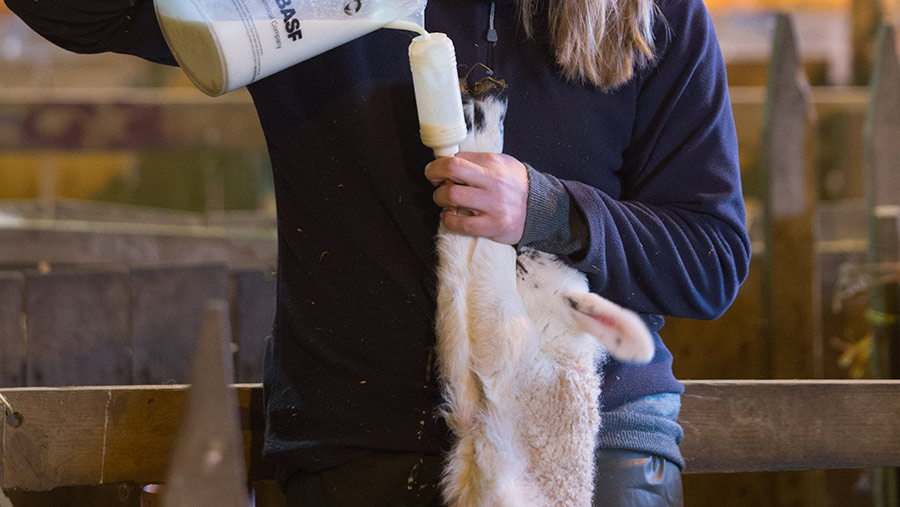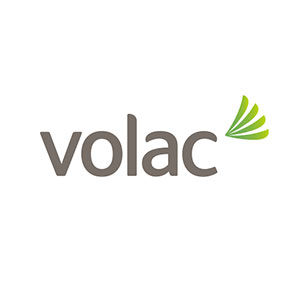5 tips for successfully feeding newborn lambs
 © Tim Scrivener
© Tim Scrivener Lambs are at their most vulnerable in their first 48 hours because they are born with no circulating antibodies and are exposed to infection for the first time.
Feeding plenty of clean, antibody-rich colostrum promptly gives the lamb a chance to absorb antibodies directly into its blood to provide temporary immunity until it develops its own.
Sheep vet Emily Gascoigne says 48% of all lamb mortalities on a sheep farm occur in the first 48 hours.
See also: 8 ways to prepare for a busy lambing season
“Unsuccessful colostrum feeding is a big risk factor,’’ she warns.
Colostrum is also very dense in energy which is important for keeping a lamb warm and growing.
Following the five Qs – Quickness, Quantity, Quality, sQueaky clean and Quantify – can help minimise losses.
1. Quickness
The quality of a ewe’s colostrum is at its highest shortly after lambing, but this rapidly declines.
Equally, the lamb’s ability to absorb it also drops; by 24-36 hours old, no further antibodies can be absorbed. Getting immunoglobulins (IgGs) into the lamb before then is key.
This process can be hindered if ewes have low-lying udders and teats because lambs are programmed to look for the hock and the belly at feeding.
“If the teats are a hand’s breadth underneath the hock it places the lamb at a severe disadvantage and it will need help to feed,” she explains.
Ms Gascoigne recommends recording these ewes at lambing and culling before the next tupping.
“We should all be aspiring for a ewe that is capable of feeding her own lamb without intervention.
“Robust culling records, a considered feeding plan and a skilled team that can spot problems are key.”
2. Quantity
A lamb needs 20% of its bodyweight in colostrum in the first 24 hours.
Assuming an average birthweight of 4kg, that’s 800ml in the first day, with half of which should be consumed within the first six hours.
3. Quality
Colostrum quality is a “make or break” factor in the health of newborn lambs. Farmers should get forage analysed to establish if supplementation is needed and consider ewe body condition score (BCS).
Use a BRIX-refractometer to check how good the quality is and only feed colostrum with a BRIX value greater than 22%, or the IgG value will be insufficient.
Keeping a relatively young flock positively drives milk colostrum quality, with three to four lactations being the optimum.
She adds: “There is a tendency to retain older ewes because of the perception that nice big udders mean lots of milk, but these ewes may let you down on colostrum and milk quality and quantity.’’
4. sQueaky clean
Dirty equipment means that the first mouthful a lamb takes in will be full of bacteria, increasing the risk of watery mouth.
Therefore, if bottle-feeding or tubing, clean everything thoroughly in hot soapy water and disinfect in baby bottle solution before using.
Ensure the whole lambing team is aware of, and follows, cleaning protocols.
5. Quantify
Testing colostrum antibody transfer will establish the success of colostrum feeding.
Blood tests directly measure serum IgG concentration resulting from passive transfer from ewe to lamb.
Samples should be taken from lambs aged between 24 hours old and one week.
“While the answer won’t help the individual lamb, it might give you an opportunity to review protocols. Tests are also really useful if there are watery mouth or scour challenges during lambing as they help to inform a plan,’’ she says.
Discuss testing with your vet.
Thanks to Volac, whose sponsorship made it possible to run this article. Farmers Weekly had full editorial control of this report.
About Volac:
 Thanks to a range of innovative Volac feeding equipment, surplus lambs can now be reared very successfully without all the inherent practical problems of fostering onto an unwilling ewe. And by correctly mixing and feeding 9 to 11 litres of Volac’s independently proven Lamlac ewe milk replacer from birth until weaning, you’ll produce good quality lambs, earn a decent margin over feed costs, as well as save hours of effort and hassle.
Thanks to a range of innovative Volac feeding equipment, surplus lambs can now be reared very successfully without all the inherent practical problems of fostering onto an unwilling ewe. And by correctly mixing and feeding 9 to 11 litres of Volac’s independently proven Lamlac ewe milk replacer from birth until weaning, you’ll produce good quality lambs, earn a decent margin over feed costs, as well as save hours of effort and hassle.
Lamlac – proven, market-leading performance for over 50 years.
